Loudspeaker enclosure
Videos
Page
A loudspeaker enclosure or loudspeaker cabinet is an enclosure in which speaker drivers and associated electronic hardware, such as crossover circuits and, in some cases, power amplifiers, are mounted. Enclosures may range in design from simple, homemade DIY rectangular particleboard boxes to very complex, expensive computer-designed hi-fi cabinets that incorporate composite materials, internal baffles, horns, bass reflex ports and acoustic insulation. Loudspeaker enclosures range in size from small "bookshelf" speaker cabinets with 4-inch (10 cm) woofers and small tweeters designed for listening to music with a hi-fi system in a private home to huge, heavy subwoofer enclosures with multiple 18-inch (46 cm) or even 21-inch (53 cm) speakers in huge enclosures which are designed for use in stadium concert sound reinforcement systems for rock music concerts.
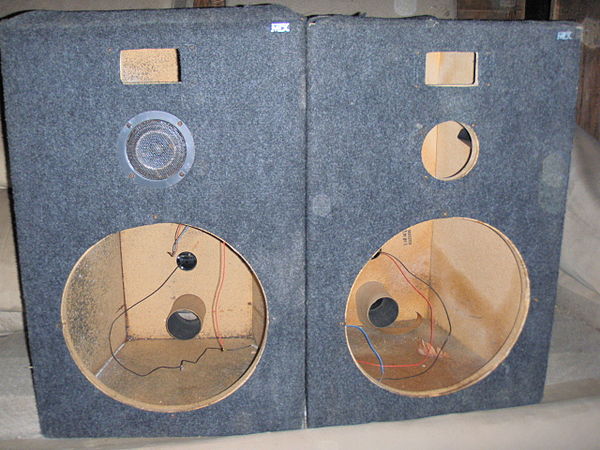
MTX Audio loudspeaker enclosures (with rear panel reflex port tubes) which can mount 15-inch woofers, mid-range drivers and horn and/or compression tweeters. In this photo, only one driver is mounted.
A Lansing Iconic multicell horn loudspeaker from 1937.
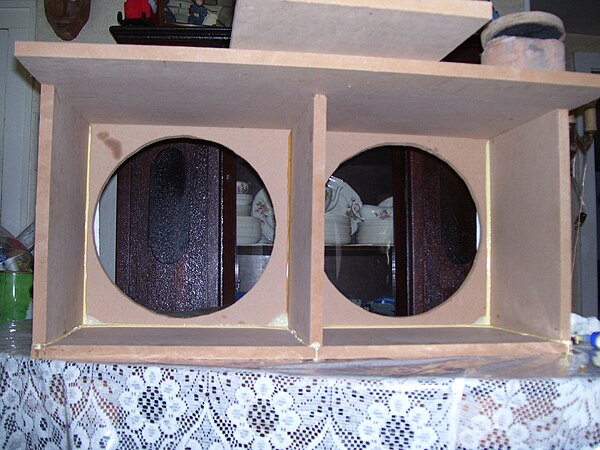
Medium density fiberboard is a common material out of which loudspeaker enclosures are built.
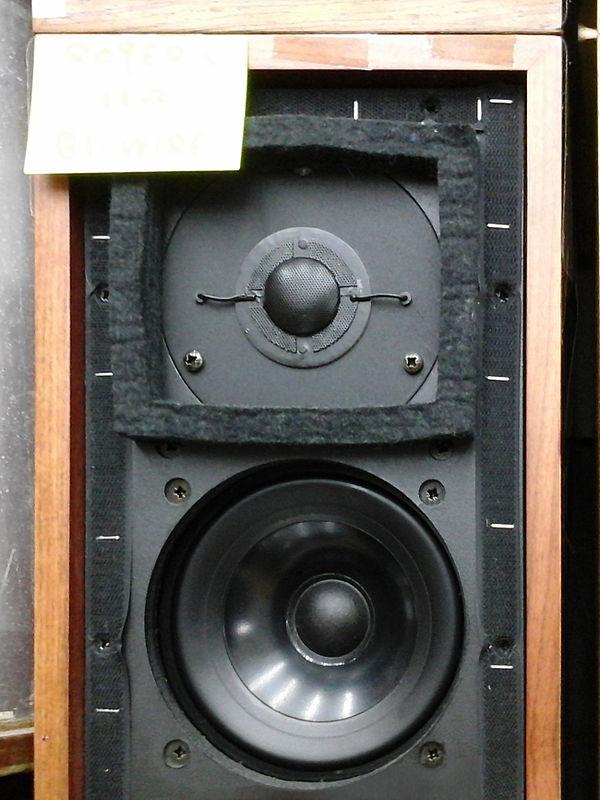
A small "bookshelf speaker", an LS3/5A, with its protective grille cover removed.
Loudspeaker
Videos
Page
A loudspeaker is an electroacoustic transducer that converts an electrical audio signal into a corresponding sound. A speaker system, also often simply referred to as a speaker or loudspeaker, comprises one or more such speaker drivers, an enclosure, and electrical connections possibly including a crossover network. The speaker driver can be viewed as a linear motor attached to a diaphragm which couples that motor's movement to motion of air, that is, sound. An audio signal, typically from a microphone, recording, or radio broadcast, is amplified electronically to a power level capable of driving that motor in order to reproduce the sound corresponding to the original unamplified electronic signal. This is thus the opposite function to the microphone; indeed the dynamic speaker driver, by far the most common type, is a linear motor in the same basic configuration as the dynamic microphone which uses such a motor in reverse, as a generator.
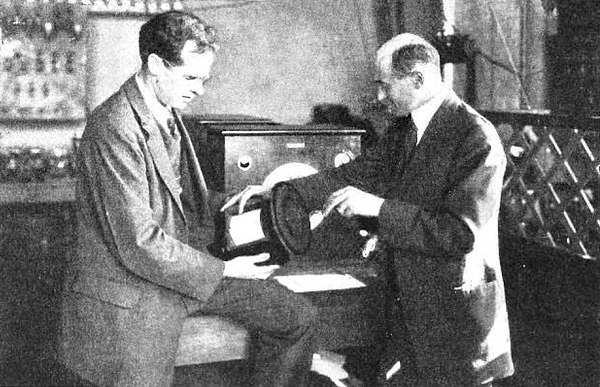
Kellogg and Rice in 1925 holding the large driver of the first moving-coil cone loudspeaker
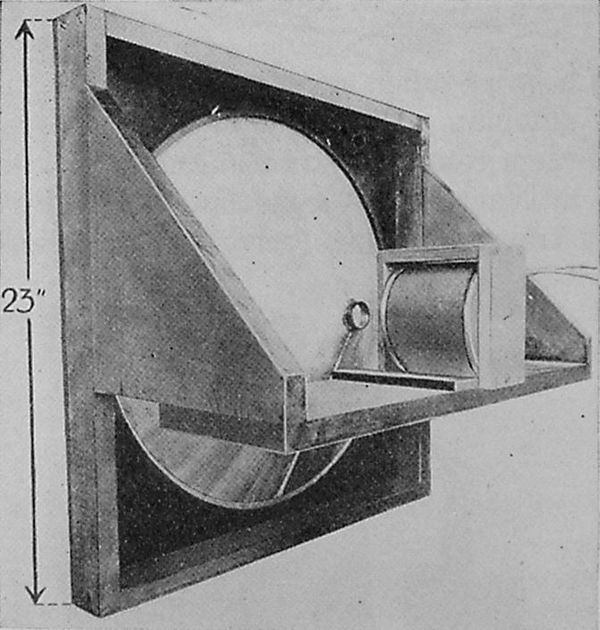
Prototype moving-coil cone loudspeaker by Kellogg and Rice in 1925, with electromagnet pulled back, showing voice coil attached to cone
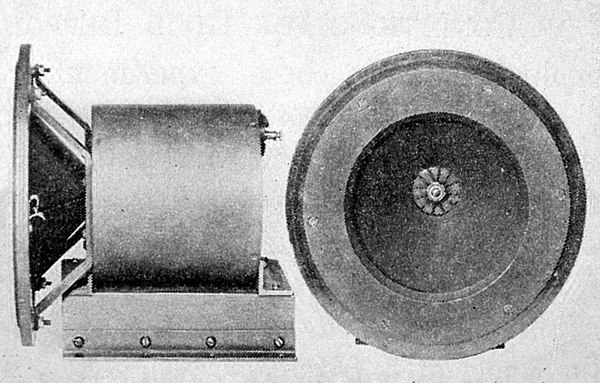
The first commercial version of the speaker, sold with the RCA Radiola receiver, had only a 6-inch cone. In 1926 it sold for $250, equivalent to about $3000 today.
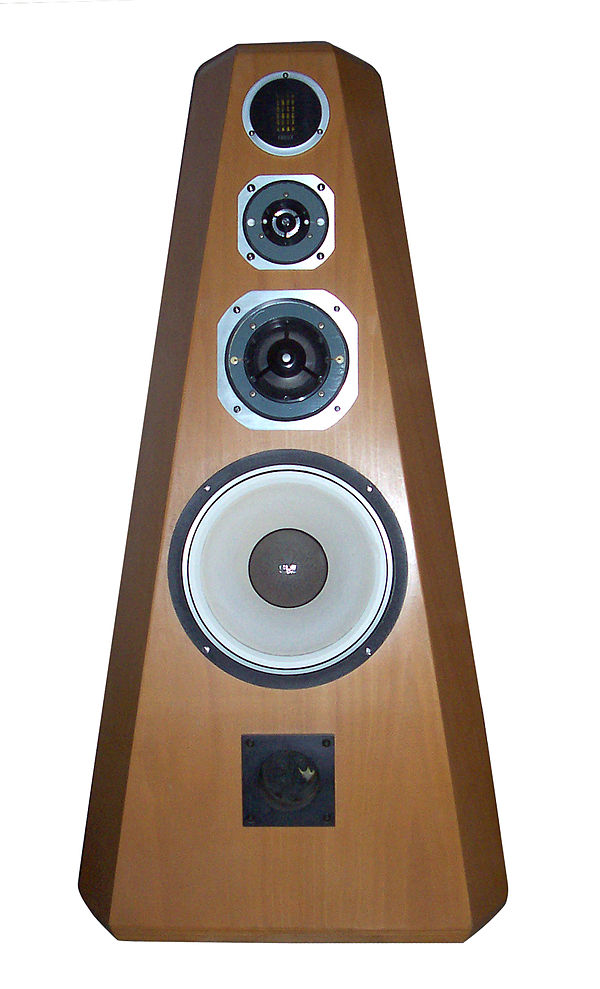
A four-way, high fidelity loudspeaker system. Each of the four drivers outputs a different frequency range; the fifth aperture at the bottom is a bass reflex port.